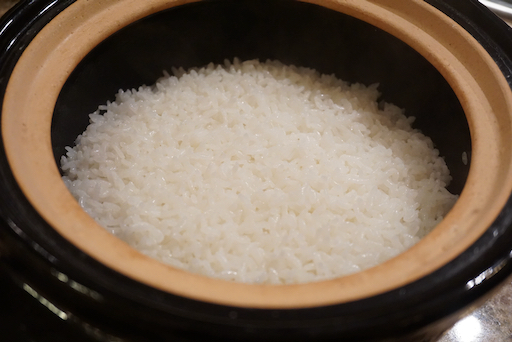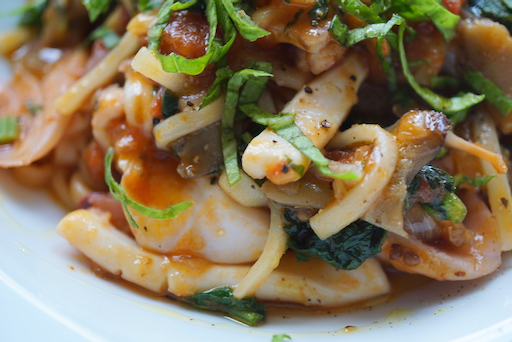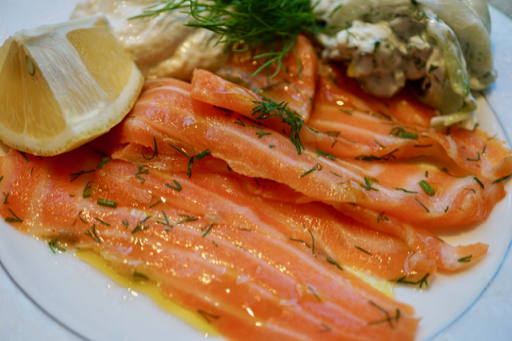Spring is the season for a species of small squid called "Hotaru-ika" ほたるイカ or Firefly squid. It is so-called because it emits a bioluminescent light like a firefly. Some years ago when we traveled to Kanazawa 金沢 and Kyoto 京都 in spring, we really enjoyed “Hotaru-ika” at various Izakayas 居酒屋. Because this squid has parasites, it must be cooked (boiled) or frozen at -30C for 4 days. That means a regular home freezer (-22 C or 0F) is not adequate. This is not a “ DIY (do it yourself ) home project”. The squid has to come from a commercial source with the resources to at least freeze it properly. While in Kanazawa, we learned, through multiple tastings that our favorite way to eat it is “Okizuke” 沖ずけ. Although this dish is made of uncooked marinated squid it is special to Toyama prefecture 富山県 (Kanazawa city is the capital) where they know to make it safe by appropriately freezing it before making it into okizuke 沖ずけ. “Oki-zuke” literally means “offshore marinated”. Traditionally, fishermen took the marinade with them on the boat and as they caught the squid , threw it into the marinade. By the time, they got back to shore, it was perfectly marinated. Although traditional, this method is not safe since the parasites will not be killed in a marinade.
In any case, recently, I mentioned to my wife (who is particularly fond of firefly squid), that it was the season and I was reading that many of the food bloggers I follow, were enjoying this seasonal delicacy. We had hotaru-ika at Tako Grill some years ago so we thought we should be able to get this in the U.S. A quick search of the internet turned up a company called “Regalis food”. They sell boiled firefly squid among other gourmet food items. They are more geared up for supplying restaurants rather than individual customers, however, so the minimal amounts required for purchase are a bit large. Nonetheless we ordered the minimum 300 grams (or three trays) of boiled firefly squid (which was shipped from Long Island) and the minimum 3 lbs. of big eye tuna akami (which was shipped from California). Although coming from different places both shipments arrived at the same time; (over night delivery).
The first picture shows one of the trays of hotaru-Ika.























































